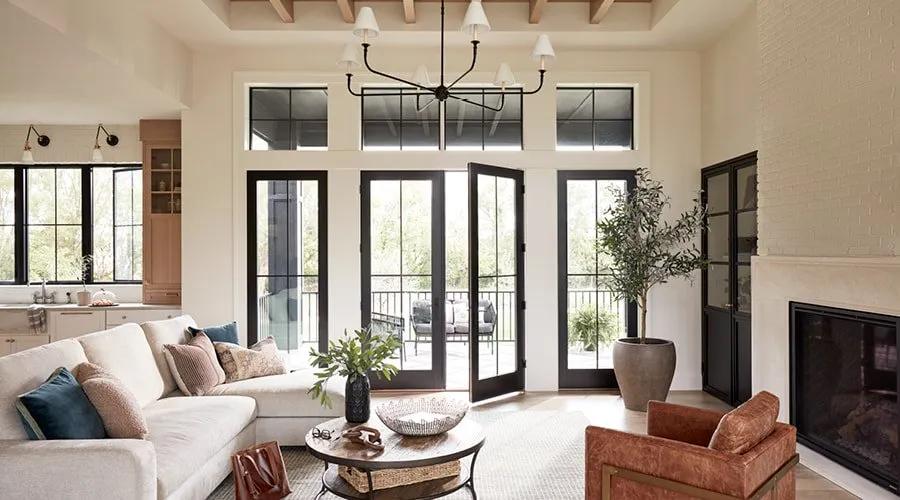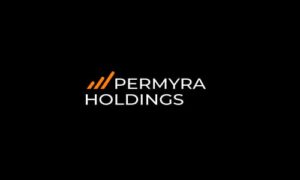Interior design has evolved dramatically, with homeowners increasingly seeking ways to blend functionality with aesthetic appeal. Among the most striking architectural elements gaining popularity are modern interior French doors, which seamlessly combine classic elegance with contemporary design sensibilities. These versatile doors enhance natural light flow, create visual continuity, and add sophisticated charm to any living space.
Whether you’re renovating your home or building from scratch, understanding the nuances of modern French door design can help you make informed decisions that elevate your interior aesthetics while maintaining practical functionality. This comprehensive guide explores everything you need to know about modern interior French doors, from design trends and style options to material selection and installation considerations.
What Defines Modern Interior French Doors?
Modern interior French doors represent a contemporary evolution of classic French door design that originated in 17th-century France. While traditional versions featured ornate wooden frames with multiple glass panes separated by decorative grids, modern interpretations embrace cleaner lines, minimalist aesthetics, and innovative materials that align with current architectural trends.
The defining characteristics include sleek profiles, larger glass panes with minimal or no grid patterns, and streamlined hardware that prioritizes both form and function. Contemporary French doors often feature full-length glass panels that maximize light transmission and create an unobstructed visual connection between spaces. This design philosophy reflects the broader modern movement that values simplicity, functionality, and the seamless integration of indoor spaces.
Modern versions also incorporate advanced materials and construction techniques. Steel frames have become increasingly popular for their industrial aesthetic and structural strength, while engineered wood products offer improved stability. Glass technology has advanced significantly, with options for energy-efficient glazing, frosted or textured glass for privacy, and even smart glass that can switch from transparent to opaque.
Popular Modern Interior French Door Styles
Today’s market offers an extensive range of styles that can complement virtually any interior design scheme, from ultra-modern minimalist spaces to transitional homes that blend contemporary and traditional elements.
Full Glass Panel Doors
The most dramatic modern interpretation features floor-to-ceiling glass with minimal framing, creating an almost invisible barrier between rooms. These doors are particularly effective in open-concept homes where maintaining visual flow is essential. Full glass panel modern interior French doors work exceptionally well between living and dining areas, home offices and main living spaces, or as elegant entries to master bedroom suites.
The key advantage is their ability to make spaces feel larger and more connected. Natural light flows freely, reducing the need for artificial lighting during daytime hours. For privacy concerns, many homeowners opt for frosted, fluted, or textured glass that obscures visibility while still allowing light transmission.
Grid Pattern Variations
Contemporary grid designs feature fewer, larger panes arranged in geometric patterns that feel current rather than dated. Popular configurations include single horizontal or vertical dividers that create two or four larger panels. Modern grid patterns emphasize symmetry and balance, with clean lines that complement surrounding architectural elements.
Black-framed grids have become particularly trendy, offering bold contrast against white walls and creating striking visual statements that echo industrial design influences. These doors work beautifully in both modern and transitional spaces, providing a bridge between contemporary and traditional design sensibilities.
Barn-Style Sliding French Doors
For spaces where swing clearance is limited, barn-style sliding French doors offer an innovative solution. These doors mount on exposed hardware that becomes a design feature in itself, with options ranging from sleek modern tracks to industrial-inspired hardware.
Sliding modern interior French doors are particularly well-suited for smaller rooms, closet entries, or spaces where furniture placement makes swing doors impractical. Many homeowners choose contrasting hardware finishes—such as matte black or brushed brass—to create visual interest and tie into other design elements throughout the space.
Frame Materials and Finishes
The frame material you choose significantly impacts both the aesthetic appeal and practical performance of your installation. Each material offers distinct advantages that should align with your design goals, budget, and maintenance preferences.
Wood Frames
Wood remains popular for modern French doors, offering natural beauty, excellent insulation properties, and flexibility to be painted or stained. Modern wood French doors typically feature simpler profiles than traditional versions, with clean lines and minimal ornamentation. For modern aesthetics, many designers recommend painted frames in crisp white, deep black, or sophisticated gray tones rather than traditional wood stains.
Steel and Metal Frames
Steel-framed modern interior French doors have surged in popularity, driven by their industrial aesthetic, exceptional strength, and ability to support larger glass panels with thinner profiles. Black steel frames have become particularly sought after, creating striking contrast in light-filled spaces and adding architectural drama to simple rooms.
The material’s strength allows for taller doors and larger individual glass panels without requiring additional support, resulting in cleaner, more modern appearances. Bronze, brass, and other metal finishes offer alternative options for those seeking warmer tones or unique patinas that develop character over time.
Aluminum Frames
For contemporary homes prioritizing sleek lines and maximum glass visibility, aluminum frames provide excellent solutions. Aluminum offers strength similar to steel with even thinner profile options, creating an almost frameless appearance. The material’s natural corrosion resistance makes it ideal for humid environments, and it’s available in numerous powder-coated finishes from classic black and white to champagne and bronze.
Current Design Trends
Understanding current trends can help you create a timeless look that won’t feel dated in just a few years.
Black-Framed French Doors
The most prominent trend has been the rise of black-framed doors, which create bold graphic statements within interior spaces. This reflects the broader movement toward high-contrast design, where black elements provide visual anchor points that ground lighter, neutral palettes. Black modern interior French doors work particularly well in white or light gray rooms, creating definition and architectural interest without overwhelming the space.
Minimalist Hardware
Door hardware has become increasingly understated. Simple lever handles, discreet hinges, and streamlined locks replace ornate traditional hardware. Many contemporary French doors feature hardware in matching frame finishes, creating a cohesive, integrated appearance. The trend toward minimalist hardware doesn’t mean sacrificing quality—modern hardware often incorporates advanced engineering for smoother operation and enhanced durability.
Floor-to-Ceiling Installations
Maximizing ceiling height has become a priority in modern home design. Floor-to-ceiling installations create dramatic visual impact while making rooms feel more spacious and grand. These tall doors draw the eye upward, emphasizing vertical space and creating a sense of openness. Beyond aesthetics, floor-to-ceiling modern interior French doors allow more natural light to flow between spaces, significantly reducing daytime lighting needs.
Selecting the Right Glass
Glass selection plays a crucial role in the functionality and appearance of modern interior French doors, balancing privacy needs, aesthetic preferences, and practical considerations.
Clear Glass remains the most popular choice, offering unobstructed views and maximum light transmission. It works well in spaces where privacy isn’t a primary concern, such as between living and dining rooms or from hallways into offices.
Frosted and Textured Glass provides privacy while maintaining light flow. These glass types obscure visibility while allowing light to pass through, creating bright, private spaces without window treatments. Fluted glass, in particular, has become a defining trend in modern interior design, offering a sophisticated retro-modern aesthetic.
Tinted and Colored Glass offers opportunities for unique personalization. Subtle gray or bronze tints add depth and sophistication, while dramatic colored options can serve as stunning focal points. Consider how tinted glass will affect lighting and color schemes in adjoining spaces before making final selections.
Installation Considerations
Proper installation is critical for ensuring your modern interior French doors function smoothly and maintain their aesthetic appeal over time. While DIY installation is possible for experienced homeowners, professional installation often delivers better results.
Structural Requirements
Installing French doors requires adequate structural support, particularly for wider openings that may necessitate removing load-bearing walls. Consult with a structural engineer or experienced contractor to assess whether additional support beams or headers are needed. For floor-to-ceiling installations or extra-wide openings, careful structural planning from the outset is essential.
Swing Direction and Clearance
Modern interior French doors typically swing inward into one of the adjoining spaces, so adequate clearance is essential. Standard French doors require at least 36 inches of unobstructed swing space. Carefully consider furniture placement and traffic patterns when determining swing direction. For spaces where swing clearance is limited, consider sliding, pocket, or bifold configurations.
Maintenance and Care
Proper maintenance ensures your modern interior French doors remain beautiful and functional for years. Contemporary materials and finishes generally require minimal upkeep.
Glass panels should be cleaned periodically with appropriate glass cleaner and microfiber cloths. For textured or frosted glass, use gentle cleaning methods that won’t damage the surface treatment.
Frame materials require different care approaches. Painted wood frames benefit from occasional cleaning with mild soap and water, while steel and aluminum frames can be wiped down with damp cloths. Avoid abrasive cleaners that might scratch or damage finishes.
Hardware should be periodically inspected and maintained to ensure smooth operation. Hinges may benefit from occasional lubrication with silicone-based products. Tighten loose screws promptly to prevent further loosening and potential damage.
Cost Considerations
Modern interior French doors represent a significant investment, with costs varying widely based on materials, size, glass type, and installation complexity. Basic doors with simple frames and clear glass might start around $500-1,000 per door pair, while premium installations featuring steel frames, custom glass, and high-end hardware can easily exceed $3,000-5,000 or more.
Installation costs typically range from $300-1,000 per door pair for straightforward installations. Complex projects requiring structural modifications can substantially increase these costs. While it’s tempting to reduce costs by choosing the least expensive options, remember that French doors are long-term installations that significantly impact your home’s aesthetics and functionality. Investing in quality materials and professional installation typically delivers better results and greater satisfaction over time.
Frequently Asked Questions
What’s the difference between traditional and modern French doors? Modern interior French doors feature cleaner lines, larger glass panes, and minimalist hardware compared to traditional versions with ornate frames and multiple small glass sections. Contemporary designs prioritize simplicity and light transmission.
Do French doors work in small spaces? Yes, when properly planned. Sliding or pocket door configurations eliminate swing clearance requirements, while narrower widths can accommodate tighter spaces.
What’s the best frame material? It depends on your priorities. Steel offers slim profiles and industrial aesthetics, wood provides insulation and natural beauty, while aluminum delivers ultra-thin frames with maximum glass visibility.
Can I install French doors myself? Experienced DIYers can, but professional installation often delivers better results, particularly for complex configurations or structural modifications.
How much do modern interior French doors cost? Costs typically range from $500-1,000 for basic models to $3,000-5,000+ for premium installations, plus installation costs of $300-1,000+.
What type of glass is best for privacy? Frosted, textured, or obscured glass provides privacy while maintaining light transmission. Fluted and reeded glass offer excellent privacy with modern aesthetics.
Creating Lasting Impact
Modern interior French doors represent more than just architectural elements—they’re design statements that can transform how you experience your home. By thoughtfully selecting styles, materials, and finishes that align with your aesthetic vision and functional needs, you create beautiful transitions between spaces that enhance daily living while adding lasting value to your property.
The key to successful French door installation lies in balancing timeless design principles with personal style preferences. Whether you choose dramatic floor-to-ceiling steel-framed doors or classic wood designs with contemporary proportions, focus on quality materials and craftsmanship that will deliver satisfaction for years to come. With careful planning and attention to detail, modern interior French doors can become one of your home’s most beloved features—beautiful, functional elements that bring joy every time you pass through them.





























